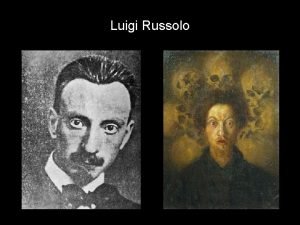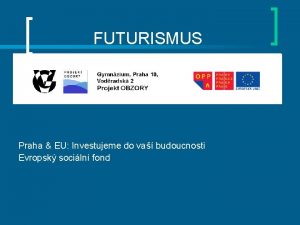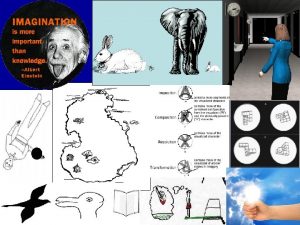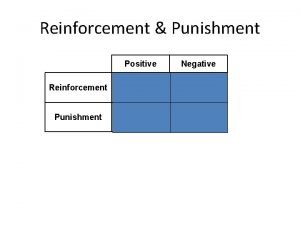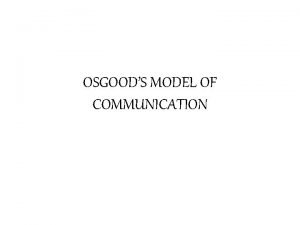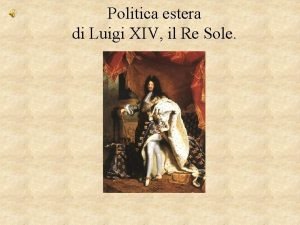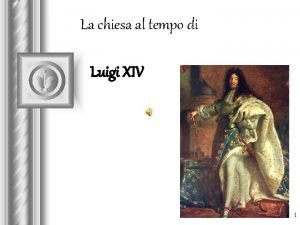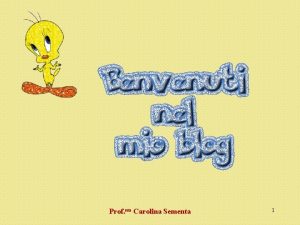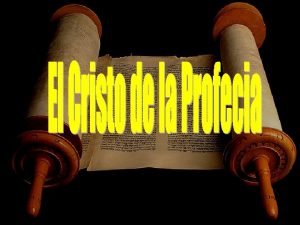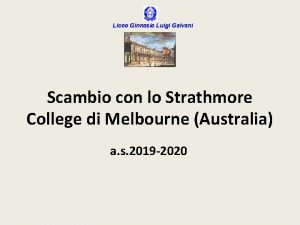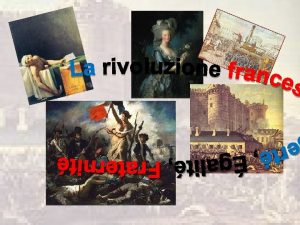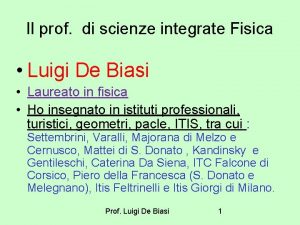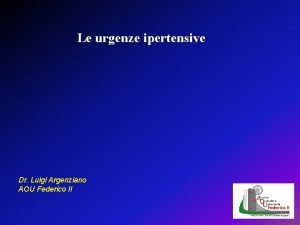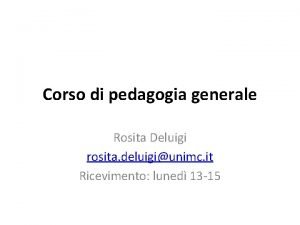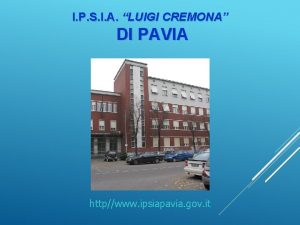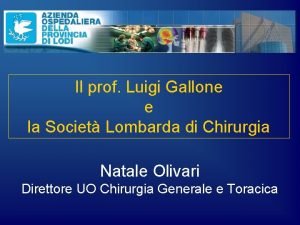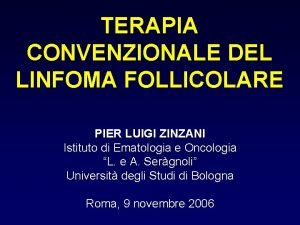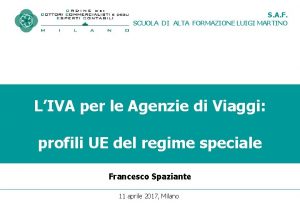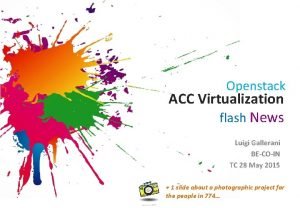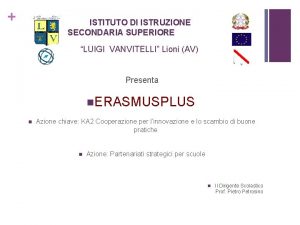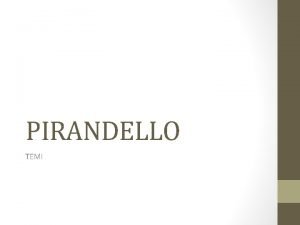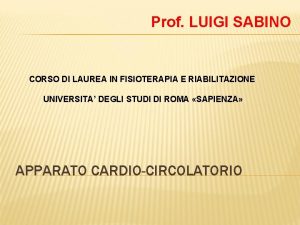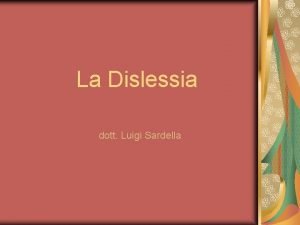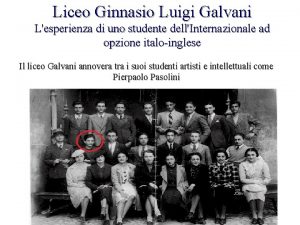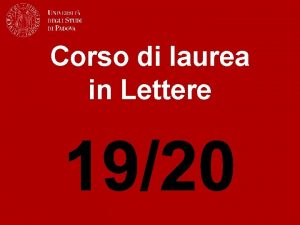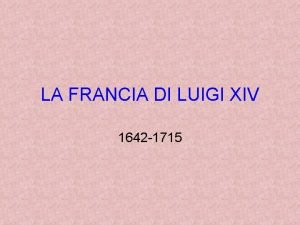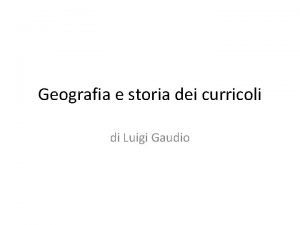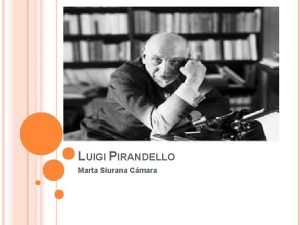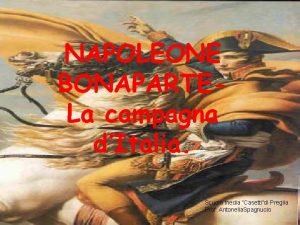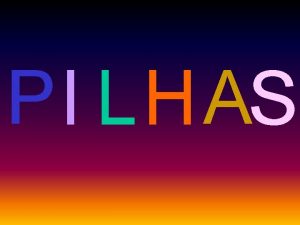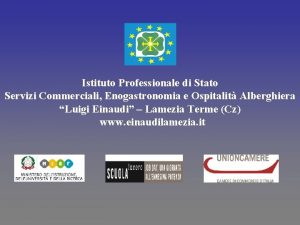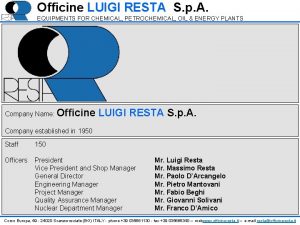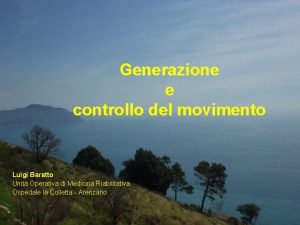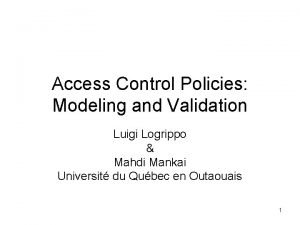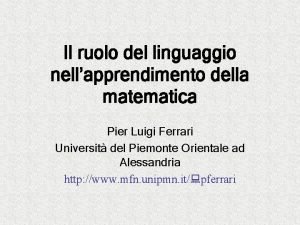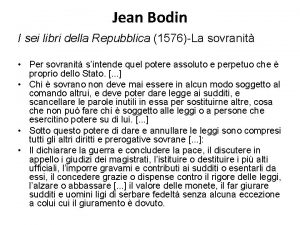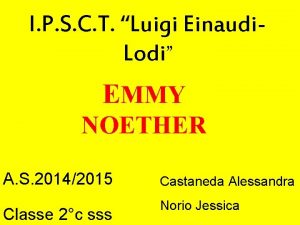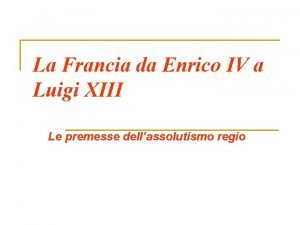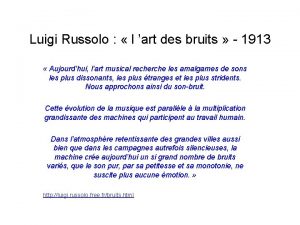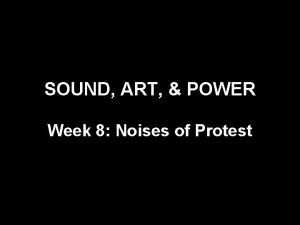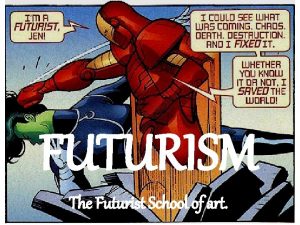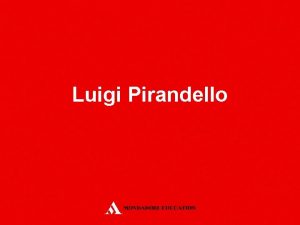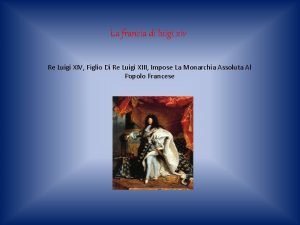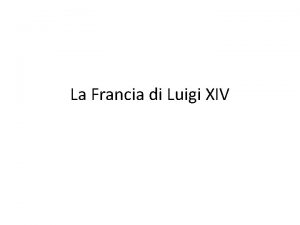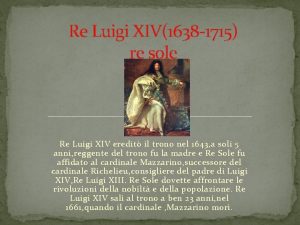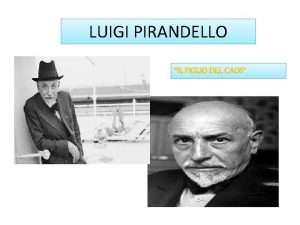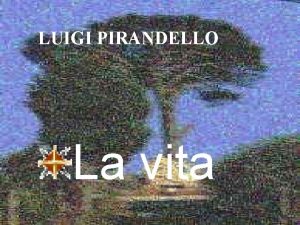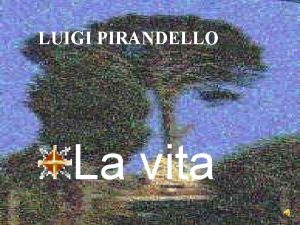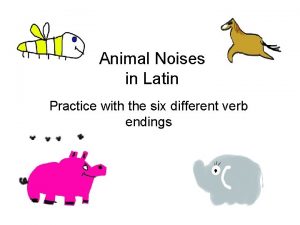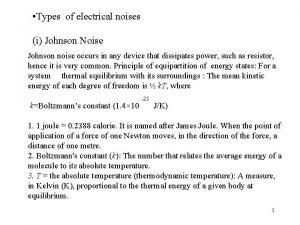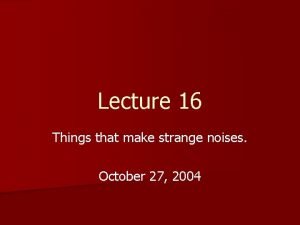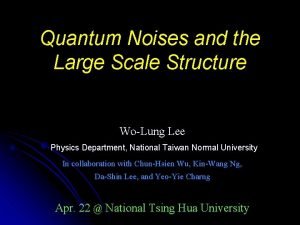Luigi Russolo The Art of Noises A Futurist



















































- Slides: 51

Luigi Russolo

The Art of Noises A Futurist Manifesto • • • Luigi Russolo (1833 -1947) Futurism in Italy Art of Noises as a manifesto Machine vs. Nature Music vs. Noise

Futurist Paintings by Luigi Russolo

“The evolution of music is comparable to the multiplication of machines” “We must break out of this limited circle of sounds and conquer the infinite varieties of noise-sounds. ” “We want to give pitches to these diverse noises, regulating them harmonically and rhythmically. ”

Six families of noises of the futurist orchestra : 1. Roars, Thundering, Explosions, Hissing roars, Bangs, Booms; 2. Whistling, Hissing, Puffing; 3. Whispers, Murmurs, Mumblings, Mutterings, Gurgling; 4. Screeching, Creaking, Rustling, Humming, Crackling, Rubbing; 5. Noises obtained by beating on metals, woods, skins, stones, pottery, etc. 6. Voices of animals and people, Shouts, Screams, Shrieks, Wails, Hoots, Howls, Death rattles, Sobs

Intonarumori

Intonarumori Today

I. Sound Theories 2. Noise

3 Theoretical Models / Case Studies: 1. Noise as political economy (Attali) 2. Noise as industrial pollution (Bijsterveld) 3. Noise as music and art (Kahn)

1. Noise: The Political Economy of Music (Attali) • “Our science has always desired to monitor, measure, abstract, and castrate meaning, forgetting that life is full of noise and that death alone is silent: work noise, noise of man, and noise of beast. Noise bought, sold, or prohibited. Nothing essential happens in the absence of noise. ” (p. 29)

• “Now we must learn to judge a society more by its sound, by its art, and by its festivals, than by its statistics. ” (p. 29) • According to Attali, what is music’s role in our society?

Music =

Music = Noise

Music = Noise Simulacrum (of ritual and sacrifice)

Music = Noise Simulacrum (of ritual and sacrifice) Mirror of society

Music = Noise Simulacrum (of ritual and sacrifice) Mirror of society A way of perceiving the world

Music = Noise Simulacrum (of ritual and sacrifice) Mirror of society A way of perceiving the world Commodity

Music = Noise Simulacrum (of ritual and sacrifice) Mirror of society A way of perceiving the world Commodity Fetishized

Music = Noise Simulacrum (of ritual and sacrifice) Mirror of society A way of perceiving the world Commodity Fetishized Spectacle

Music = Noise Simulacrum (of ritual and sacrifice) Mirror of society A way of perceiving the world Commodity Fetishized Spectacle Herald (“for it is prophetic” p. 29)

Subversion

Subversion “Metaphor of the real” (p. 31)

Subversion “Metaphor of the real” (p. 31) “A tool for the creation or consolidation of a community” (p. 32)

Subversion “Metaphor of the real” (p. 31) “A tool for the creation or consolidation of a community” (p. 32) A mode of immaterial production, a collective memory

Music = Noise Simulacrum (of ritual and sacrifice) Mirror of society A way of perceiving the world Commodity Fetishized Spectacle Herald (“for it is prophetic” p. 29)

Subversion “Metaphor of the real” (p. 31) “A tool for the creation or consolidation of a community” (p. 32) A mode of immaterial production, a collective memory

“Our music foretells our future. Let us lend it an ear. ” (p. 36)

2. Industrial Noise (Bijsterveld) • “… to demonstrate the role of the cultural meaning of sound in the clash between the dramatization of industrial noise problem by experts, notably physicians, and the response to this dramatization by shopfloor laborers. ” (p. 153) • Focusing on pro-earplug campaigns in the Netherlands and Germany – within the wider context of Western history of industrial noise and noise abatement.

• Sound in science - the role of sound in generating scientific knowledge • Science of sound – e. g. acoustics, and their coevolution with the public problems of noise • Symbolism of sound / cultural meaning of sound

Cultural meanings of industrial noise: • Lacking rhythm • Street noise worse than industrial noise (bourgeois view) • Music in factories “…rhythmic sounds was the thing to strive for. ” (p. 154) believed to lead to productivity and efficiency • Potential to inflict damage to the ear

• Quieting the machines VS. personal protective devices for workers • Efforts to educate workers VS. worker’s refusal to wear earplugs • Noise as reassurance • Worker’s indigenous knowledge • Is there a gender dynamic?

Is this “epistemologically relevant”? (See p. 161)

3. Avant-Garde Noise (Kahn)

Who is the avant-garde?

Who is the avant-garde? • Cabaret Voltaire of Zurich Dada (Richard Huelsenbeck, Hugo Ball, Tristan Tzara)

Who is the avant-garde? • Cabaret Voltaire of Zurich Dada (Richard Huelsenbeck, Hugo Ball, Tristan Tzara) • Italian Futurists (Russolo, F. T. Marinetti, Balilla Pratella)

Cabaret Voltaire, Zurich, 1935

Cabaret Voltaire today

Sophie Taeuber Hugo Ball

Tristan Tzara performance

Marcel Janco Cabaret Voltaire (1916)

Avant-Garde Noise • “This noise was made significant in part by making others—primarily women and non-Europeans—insignificant in a context of war and religion. ” (p. 427) • All of Dada “beats a drum, wails, sneers and lashes out. ” (Richard Huelsenbeck quoted on p. 427)

• Dada: ü ü ü Bruitism Futurism Primitivism Christian? Polygot Simultaneism

• Avant-garde noise, in other words, both marshals and mutes the noise of the other: power is attacked at the expense of the less powerful, and society itself is both attacked and reinforced. ” (p. 429) • What does Kahn mean by this?

Artists and composers influenced by Russolo’s “The Art of Noises” (p. 436): • Ravel, Debussy, Prokofiev, Stravinsky, Antheil, Satie, Milhaud, Honegger, Varèse, Cowell • Cocteau and Diaghilev’s production of Parade, scored by Satie • The poetry of Mayakovsky and the films of Vertov. • Vorticism in the UK (Ezra Pound) • Mohloy-Nagy and Mondrian


4’ 33” (1952) by John Cage


Silence is • Negative space (“The stuff between the notes, ” p. 40) • Threatened and endangered • Unattainable (“There is no aural equivalent for the eyelid, ” p. 41) • “Requisite for contemplation, or more quaintly, the forming of a self. ” (p. 42) • Vacuum, void, death

• • An auditory veil The end and the beginning Censorship and propaganda “…the enemy of art, it is also its motivation and medium. ” (p. 44) • Anti-Capitalist • “… is the only Voice of our God. ” (Melville quoted on p. 44) • A commodity

“Wherever we are, what we hear is mostly noise. When we ignore it, it disturbs us. When we listen to it, we find it fascinating. ” (John Cage, p. 25)
 Luigi russolo art of noises
Luigi russolo art of noises Futurismus charakteristika
Futurismus charakteristika Medical futurist
Medical futurist Be not afeard the isle is full of noises
Be not afeard the isle is full of noises Difference between positive and negative reinforcement
Difference between positive and negative reinforcement Fixed ratio schedule example
Fixed ratio schedule example Osgood schramm model of communication example
Osgood schramm model of communication example Politica estera luigi xiv
Politica estera luigi xiv Kathy yelick berkeley
Kathy yelick berkeley Istituto einaudi lodi
Istituto einaudi lodi Luigi calori
Luigi calori Pier luigi zinzani
Pier luigi zinzani Luigi xiv capo della chiesa
Luigi xiv capo della chiesa Luigi sementa
Luigi sementa Luigi cascioli
Luigi cascioli Luigi galvani
Luigi galvani Liceo linguistico galvani
Liceo linguistico galvani Luigi 16
Luigi 16 Luigi gratton
Luigi gratton Luigi de biasi fisica
Luigi de biasi fisica Captopril sublinguale crisi ipertensiva
Captopril sublinguale crisi ipertensiva Rosita de luigi unimc
Rosita de luigi unimc Istituto cremona pavia
Istituto cremona pavia Luigi gallone
Luigi gallone Pier luigi zinzani
Pier luigi zinzani Scuola di alta formazione luigi martino
Scuola di alta formazione luigi martino Luigi gallerani
Luigi gallerani Iiss vanvitelli lioni
Iiss vanvitelli lioni Decadentismo pirandello
Decadentismo pirandello Luigi meneghini
Luigi meneghini Luigi sabino
Luigi sabino Dott. pier luigi bruni
Dott. pier luigi bruni Liceo galvani bologna
Liceo galvani bologna Scuola media pirandello comiso
Scuola media pirandello comiso Dislessia mista
Dislessia mista Liceo ginnasio luigi galvani
Liceo ginnasio luigi galvani Moodle unipd logopedia
Moodle unipd logopedia Madre luigi xiv
Madre luigi xiv Campus luigi pirandello
Campus luigi pirandello Luigi gaudio professore
Luigi gaudio professore Luigi pirandello frases
Luigi pirandello frases Repubbliche sorelle cartina
Repubbliche sorelle cartina Marica tondo
Marica tondo Luigi pi
Luigi pi Istituto professionale einaudi lamezia terme
Istituto professionale einaudi lamezia terme Resta s
Resta s Luigi baratto
Luigi baratto Luigi rule3
Luigi rule3 ø matematica
ø matematica I sei libri della repubblica
I sei libri della repubblica Ipsct einaudi
Ipsct einaudi Paulette enrico iv
Paulette enrico iv
